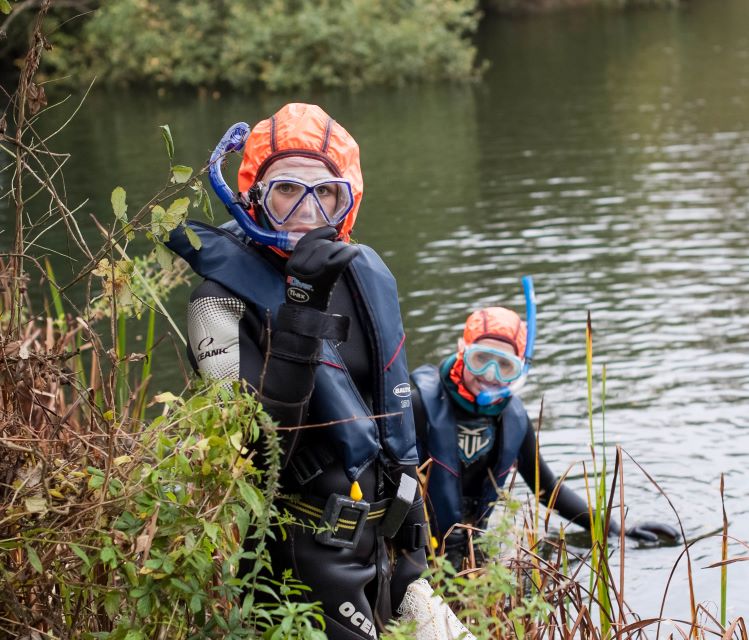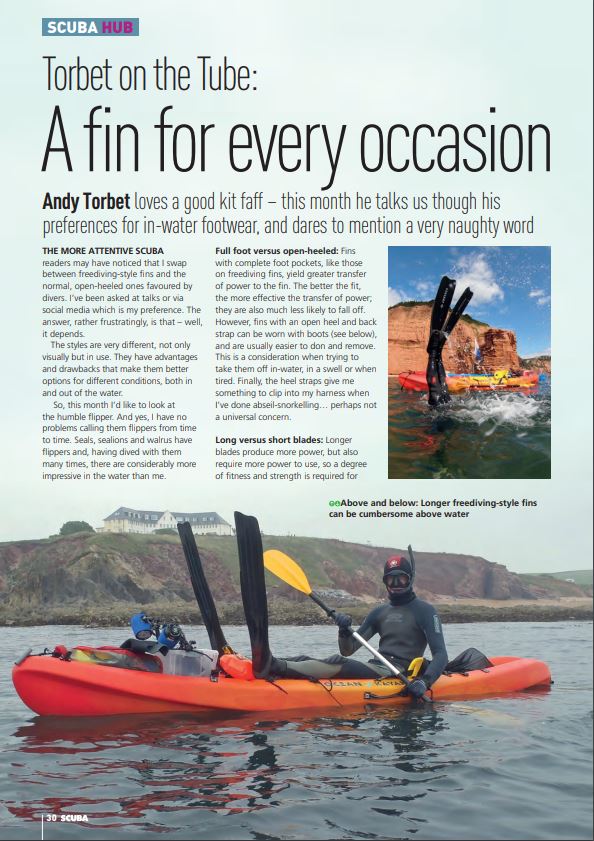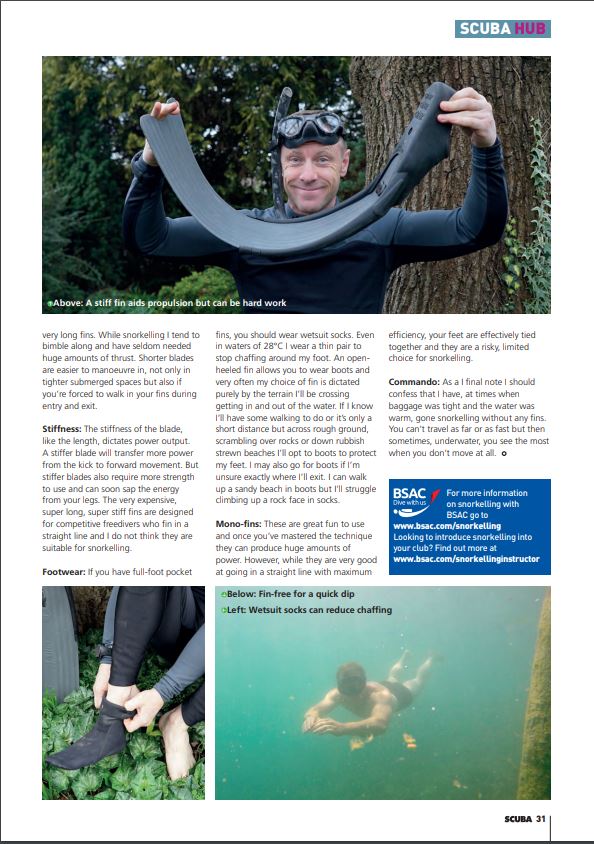
Andy Torbet loves a good kit faff – this month he talks us though his preferences for in-water footwear, and dares to mention a very naughty word
The more attentive Scuba readers may have noticed that I swap between freediving-style fins and the normal, open-heeled ones favoured by divers. I’ve been asked at talks or via social media which is my preference. The answer, rather frustratingly, is that – well, it depends.
The styles are very different, not only visually but in use. They have advantages and drawbacks that make them better options for different conditions, both in and out of the water.
So, this month I’d like to look at the humble flipper. And yes, I have no problems calling them flippers from time to time. Seals, sealions and walrus have flippers and, having dived with them many times, there are considerably more impressive in the water than me.


Full foot versus open-heeled
Fins with complete foot pockets, like those on freediving fins, yield greater transfer of power to the fin. The better the fit, the more effective the transfer of power; they are also much less likely to fall off. However, fins with an open heel and back strap can be worn with boots (see below), and are usually easier to don and remove. This is a consideration when trying to take them off in-water, in a swell or when tired. Finally, the heel straps give me something to clip into my harness when I’ve done abseil-snorkelling… perhaps not a universal concern.
Long versus short blades
Longer blades produce more power, but also require more power to use, so a degree of fitness and strength is required for very long fins. While snorkelling I tend to bimble along and have seldom needed huge amounts of thrust. Shorter blades are easier to manoeuvre in, not only in tighter submerged spaces but also if you’re forced to walk in your fins during entry and exit.
Stiffness
The stiffness of the blade, like the length, dictates power output. A stiffer blade will transfer more power from the kick to forward movement. But stiffer blades also require more strength to use and can soon sap the energy from your legs. The very expensive, super long, super stiff fins are designed for competitive freedivers who fin in a straight line and I do not think they are suitable for snorkelling.
Footwear
If you have full-foot pocket fins, you should wear wetsuit socks. Even in waters of 28°C I wear a thin pair to stop chaffing around my foot. An open heeled fin allows you to wear boots and very often my choice of fin is dictated purely by the terrain I’ll be crossing getting in and out of the water. If I know I’ll have some walking to do or it’s only a short distance but across rough ground, scrambling over rocks or down rubbish strewn beaches I’ll opt to boots to protect my feet. I may also go for boots if I’m unsure exactly where I’ll exit. I can walk up a sandy beach in boots but I’ll struggle climbing up a rock face in socks.
Mono-fins
These are great fun to use and once you’ve mastered the technique they can produce huge amounts of power. However, while they are very good at going in a straight line with maximum efficiency, your feet are effectively tied together and they are a risky, limited choice for snorkelling.
Mono-fins
These are great fun to use and once you’ve mastered the technique they can produce huge amounts of power. However, while they are very good at going in a straight line with maximum
BSAC promote and develop the 'best practice' in snorkelling safety for snorkellers in the UK.
If any of you have any suggestions, I’d love to hear them. Drop a note to me through the editor’s email at SCUBA or on my social media below:
Facebook: OfficialAndyTorbet
Instagram: @andy_torbet
Twitter: @andytorbet
Article by Andy Torbet for SCUBA magazine, issue 91.
Images in this online version have been substituted from the original images in SCUBA magazine due to usage rights.
Find out more about learning to snorkel or discover snorkelling in the UK.

 Author: Andy Torbet | Posted 19 Jun 2019
Author: Andy Torbet | Posted 19 Jun 2019


